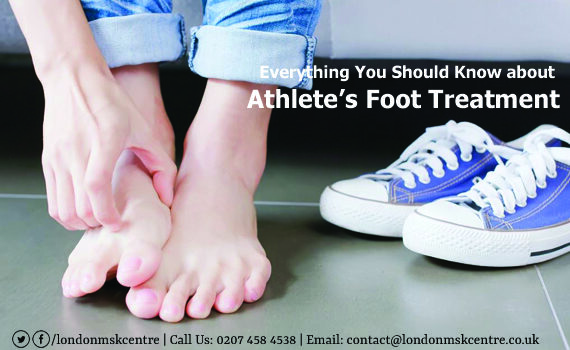
Everything You Should Know About Athlete’s Foot Treatment
Athlete’s foot is a type of fungal infection that usually occurs between the toes. In most cases, an athlete’s foot is observed in people who tend to wear tight-fitting shoes and their feet tend to become rather sweaty as a result. Common signs associated with an athlete’s foot include scales and rashes that can lead to reddening, stinging, itching, and burning. Athlete’s foot is a contagious condition and can spread through contaminated towels, clothing items, and flooring. It is important to consult a doctor for the treatment of this condition if things do not improve after about a few weeks of using over-the-counter medications and ointments.
Treatment of athlete’s foot
The method used for treating athlete’s foot will depend on the severity and nature of the condition. If the intensity of the condition is mild, you may be advised to use an antifungal ointment that can be found over the counter. The athlete’s foot is considered to be mild when there are fissures, scaly white skin patches on the surface without any itching or redness. Additionally, the athlete’s foot can also be treated with an antifungal powder, cream, or spray. In case these methods of treatment do not respond as expected, you are going to need a specific type of prescription-strength medication that can be topically applied. In the case of severe types of infections, you may be advised to use antifungal pills which should be taken orally.
It is very important for you to adhere to the best foot hygiene if you have been affected by athlete’s foot. You should wash your feet on a regular basis and keep them dry. You should also use an antifungal cream and apply it over the affected area. Use an antifungal powder to dust the shoes and socks that you are wearing. While trying to find over-the-counter ointments for your athlete’s foot, try to look for medical products consisting of ketoconazole, clotrimazole, naftifine or econazole.
It is also essential that you consult a professional foot care medical specialist should there be no sign of improvement even after using these remedies for about two weeks. You should also consult the doctor if you have an athlete’s foot along with other conditions such as diabetes and other types of circulatory problems. Severe athlete foot infections marked by itchy and reddish skin accompanied by peeling and blisters should be treated by a professional foot specialist.
There are a number of home remedies that you can try out if you have an athlete’s foot. For instance, you can use tea tree oil, hydrogen peroxide along with iodine, garlic, baking soda, talcum powder, and a hairdryer. You should also try to get adequate protection for your feet when you are in a public space like in a hotel or a swimming pool. Unless you do so, your symptoms may be aggravated. It is also important that you avoid scratching the affected area and instead use cool water to ease the discomfort.










